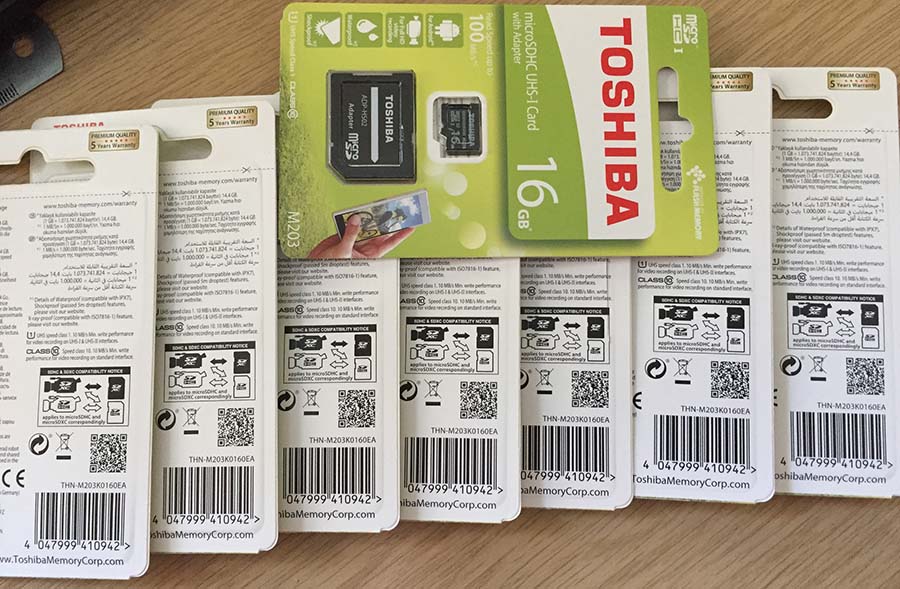Raspberry Pi3 alternative?
-
@bjacobse said in Raspberry Pi3 alternative?:
@nca78 said in Raspberry Pi3 alternative?:
Do you also use the ethernet switch as a power sensor ? :D I would just use an USB splitter before the powerbank, then use one wire and a voltage divider to connect it directly to a GPIO...
There are typically many paths to same solution :-)
It was easiest for me to just copy exact same setup - why should I bother to purchase an USB splitter and spend time to setup a voltage divider and create a script that needed to measure voltage on a GPIOIt's just that it looks like a serious overkill and cable mess to use an ethernet splitter + it's own supply + ethernet cable when it can be done with less than 1$ of hardware and only one splitter + one spare usb cable. But that's just my own opinion :)
And if you want to really go for cheap and easy solution the raspi ups hat (blue PCB like in the link below) works like a charm. Compact, efficient, no extra cable. And I think the price is even cheaper than powerbank + splitter.
https://www.aliexpress.com/item/32882666003.html@nca78
I think you must have misunderstood the concept. I did not use a ethernet splitter and extra cable mess...
I use my router as IP supplier, 1 ethernet cable to my RPI, so I have cable to my domoticz, the RPI gets IP via cable, and if the I'm not able to ping gateway (router) then there is no power as the gateway is down.
the ONLY extra thing I have purchased is a the powerbank :-) -
@bjacobse said in Raspberry Pi3 alternative?:
@nca78
I think you must have misunderstood the concept. I did not use a ethernet splitter and extra cable mess...
I use my router as IP supplier, 1 ethernet cable to my RPI, so I have cable to my domoticz, the RPI gets IP via cable, and if the I'm not able to ping gateway (router) then there is no power as the gateway is down.
the ONLY extra thing I have purchased is a the powerbank :-)Indeed I misunderstood, it makes much more sense like that :)
@zboblamont said in Raspberry Pi3 alternative?:
Perhaps French, German and Dutch supplies are more reliable, but here in Romania, "Vorsprung durch fuckup" prevails
Same here in Vietnam... That's why I'll also have a wifi gateway with battery backup soon.
-
i know this is old thread but here is what i have to deal with, truck load of different sd card ordered from amazon from different supplier, some full filled by amazon and some sold by amazon and all of them are fake and devil is in serial number so until you order more then one SD card you can never know if its real or fake.





-
i know this is old thread but here is what i have to deal with, truck load of different sd card ordered from amazon from different supplier, some full filled by amazon and some sold by amazon and all of them are fake and devil is in serial number so until you order more then one SD card you can never know if its real or fake.





@pihome It's a nightmare even for reputable stores. Bought an expensive Samsung thinking it would be reliable, turned out to be fake. Store wasn't happy when I asked for money back.
-
may be its time for Raspberry pi foundation to put some storage on the board, these fake cards are very unreliable and i think small pc is better option then Raspberry pi at this stage.
@pihome I gave up and used a laptop hdd, a little bulkier but no regrets..
-
It seems to be me the issue is buying fake SD cards. How do you even get in that situation? Do you buy them from China?
-
It seems to be me the issue is buying fake SD cards. How do you even get in that situation? Do you buy them from China?
-
@alowhum
All of them from Amazon sold by Amazon, i m out of ideas how and where to get genuine sd cards@pihome I second that.
@alowhum I don't think you appreciate just how far this fakery extends, so, sorry your criticism is unfair - Suppliers are playing Russian roulette offering what they believe is genuine product as the market is swamped with "genuine" fakes. My own experience was a with a big local store, and despite the usual evasion from the sales people initially they were caught with no escape when I presented the evidence. When you are selling in the zillions few can verify authenticity as they are packaged, it is a nightmare for those buying in in bulk.
The only solution I found was to go for the cheapest brand on the market as it is not the pirates' intended target. My mobile microSD is HAMA on year 2, the "genuine" Samsung blew after 2 months... Go figure... -
I just buy them in brick and mortar store. Always genuine.
